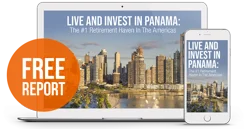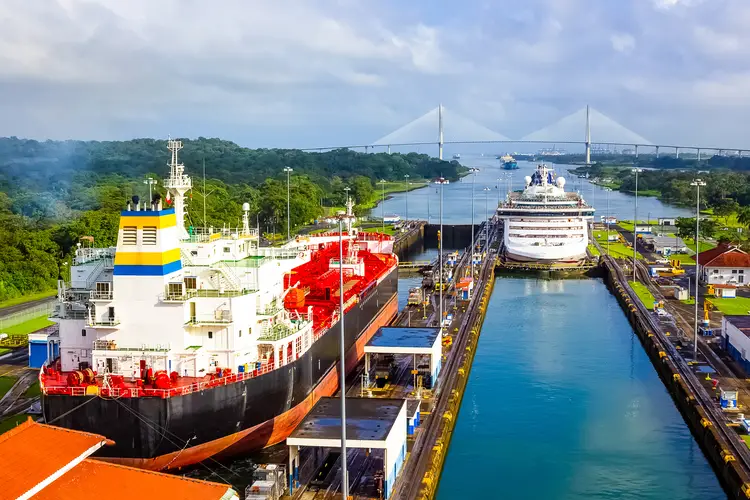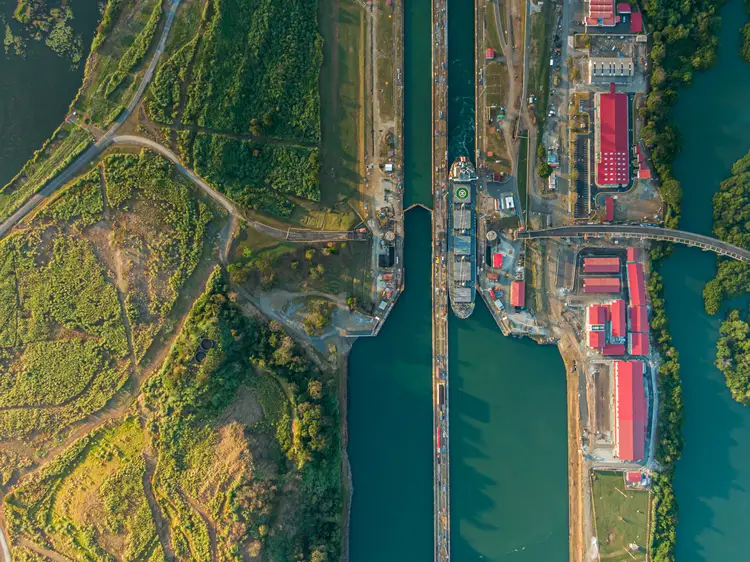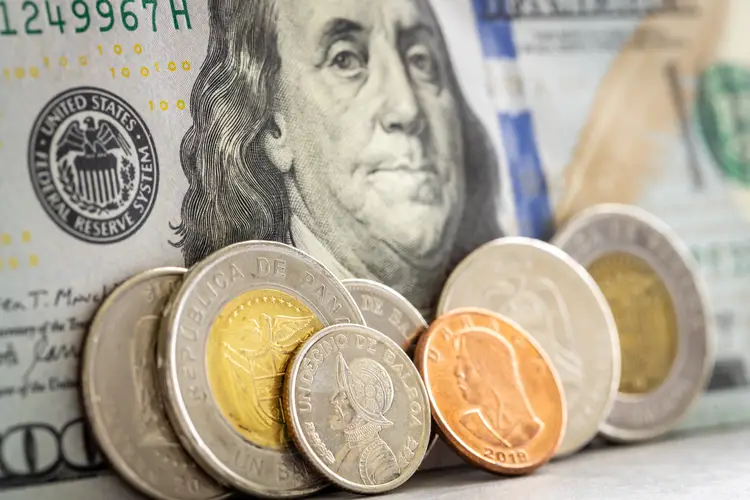Living in Panama: Panama’s Best Options For Expats
Living in Panama: Panama is a land of mesmerizing natural beauty, vibrant folklore and traditions, and a diversity of lifestyle...
Top Destinations:
Whether you’re looking for fun and sun, a peaceful retirement, or the chance to earn some extra income, you’ve got a real world of opportunity open to you… In short, we’ve done our best to narrow down your best options, but only you can decide the right country for you.
Best For:
How Much Will It Cost You To Live Overseas?
The only honest answer is, we have no idea. And neither does anyone else. The only one who can answer that question is you. Here’s the most important thing to understand about budgeting your new life overseas…
Follow Us:
Join our Weekly Newsletter
Overseas Property Alert
Sign up for our weekly newsletter to receive expert insights on the best international real estate investment opportunities.
Upcoming Events
Live and Invest In Spain Conference
Offshore Wealth Summit
Greece Workshop
VALENCIA, SPAIN
Sep. 17-19, 2025
PANAMA CITY, PANAMA
Oct. 15-17, 2025
VIRTUAL
Nov. 13, 2025
Contact Our Events Team
Reach us with your questions by email at: events@liveandinvestoverseas.com
Unlock The World
Overseas Havens Reports
Conference Kits
Lahardan Books
Our Customer Service team is here to assist with any questions or concerns CustomerService@LiveandInvestOverseas.com
Top Destinations:
Whether you’re looking for fun and sun, a peaceful retirement, or the chance to earn some extra income, you’ve got a real world of opportunity open to you… In short, we’ve done our best to narrow down your best options, but only you can decide the right country for you.
Best For:
How Much Will It Cost You To Live Overseas?
The only honest answer is, we have no idea. And neither does anyone else. The only one who can answer that question is you. Here’s the most important thing to understand about budgeting your new life overseas…
Follow Us:
Join our Weekly Newsletter
Overseas Property Alert
Sign up for our weekly newsletter to receive expert insights on the best international real estate investment opportunities.
Upcoming Events
Live and Invest In Spain Conference
Offshore Wealth Summit
Greece Workshop
VALENCIA, SPAIN
Sep. 17-19, 2025
PANAMA CITY, PANAMA
Oct. 15-17, 2025
VIRTUAL
Nov. 13, 2025
Contact Our Events Team
Reach us with your questions by email at: events@liveandinvestoverseas.com
Unlock The World
Overseas Havens Reports
Conference Kits
Lahardan Books
Our Customer Service team is here to assist with any questions or concerns CustomerService@LiveandInvestOverseas.com
LIVE AND INVEST IN PANAMA

WORLD’S #1 RETIREMENT HAVEN
IN THE AMERICAS
We Value Your Privacy! We will not share your email address with anyone else, period.
Home » Best Countries To Live, Invest, And Retire Overseas » Panama : Everything You Need To Know In 2025 » Economy In Panama
The economy in Panama is fast-growing and shows signs of a bright future. We share Panama's economic stats such as GDP, inflation, and more.

Panama’s economy is dollarized and is primarily supported by a well-established services sector that constitutes three-quarters of its GDP. This sector includes essential services such as the operation of the Panama Canal, banking, the Colon Free Zone, insurance, container ports, flagship registration, and tourism.
The economic landscape was significantly enhanced by the Panama Canal expansion project that began in 2007. The new Neopanamax Locks were inaugurated on June 26, 2016, signaling the start of commercial operations for the expanded canal.
The United States and China are the leading users of the canal. Additionally, Panama has invested $1.2 billion in constructing a metro system in Panama City.
Panama has built its economy more on business, banking, and commerce than on tourism.
But this is changing, as Panama is making a concerted effort to draw attention to her natural offerings, as well as her financial benefits. These elements, then, comprise the dual personality of this little country that holds such an important geographic position.
Steadily increasing numbers of foreigners looking for inexpensive vacations and quality retirement are moving to Panama.
The tourist industry accounts for about 9% of the GDP and has no doubt contributed to Panama’s economic growth.
Special benefits for foreign retirees attract even more visitors and potential residents to the country.

Reviewed By Kathleen Peddicord
Kathleen is the Live and Invest Overseas Founding Publisher. She has more than 30 years of hands-on experience traveling, living, and buying property around the world.



Start Your New Overseas Life Today
A world full of fun, adventure, and profit awaits! Sign up for our free daily e-letter, Overseas Opportunity Letter, and we’ll send you a FREE report on the 10 Best Places To Retire In Style Overseas Today 2024
We Value Your Privacy! We will not share your email address with anyone else, period.
Above all, Panama is the most advanced nation in the region, the hub of the Americas, and one of the world’s biggest trading zones, thanks to geography and the Canal.
You can’t grow this fast without experiencing stress and growing pains are unavoidable. Panama’s economy grew by better than 10% in 2007, 2008, and 2009.
In 2010, despite the global financial crisis, it expanded by a further 7.7%. Growth rates bounced back, to over 10% in 2011 and 2012, and around 7% to 8% for 2013 and 2015.
The transformation in this country over the past decade-plus has been remarkable.
Panama has shown the world that she knows how to put her assets to good use, and, as a result, she stands today as the world’s most appealing overseas retirement and lifestyle haven.

Despite ongoing global economic problems, Panama is a prosperous country that boasts continued stability and growth.
Above all, this is a young and healthy democracy and a safe and peaceful nation. It’s been 14 years since the Americans left and handed over control and management of the Panama Canal to the Panamanians.
The Panama Canal completed its newest expansion. There is no doubt that the Panama Canal continues to contribute a great deal to Panama’s economic progress.
The expansion, a US$5.3 billion project, doubled its current capacity, creating 7,000 jobs—95% to Panamanians— and reduced unemployment considerably. Panamanians earn the highest per-capita income in all Central America.

| Information Type | Notes |
|---|---|
| GDP (purchasing power parity) (2024) | US$253.03 billion |
| GDP per capita (2024) | US$17,304 |
| Real annual growth rate (2024) | 2.5% |
| Inflation (2024) | 3.2% |
| Unemployment | 8.4% |
| Arable land | 7.16% |
| Agriculture | bananas, rice, corn, coffee, sugarcane, vegetables; livestock; shrimp |
| Labor force | 2.24 million |
| Labor force by population | agriculture 3.8%, industry 16.8%, services 79.4% |
| Industries | construction, brewing, cement and other construction materials, sugar milling |
| Natural resources | copper, mahogany forests, shrimp, hydropower |
| Exports | US$1.2 billion f.o.b.; note - includes the Colón Free Zone |
| Export - commodities | bananas, shrimp, sugar, coffee, clothing |
| Imports | US$24.69 billion f.o.b. (includes the Colón Free Zone) |
| Import - commodities | capital goods, crude oil, foodstuffs, consumer goods, chemicals |
| Major trading partners | U.S., Canada, Sweden, Netherlands, Costa Rica, Mexico, Colombia, China |
| Top Export Partners (2024) | U.S., Canada, Costa Rica, Netherlands, Taiwan |
| Top Import Partners | U.S., China, Costa Rica, Mexico |
When you look at Panama’s stability and growth over the last several decades, it’s obvious that the Isthmus is on its way to becoming the next Singapore.
This country has solid foreign investment, an economy pegged to the U.S. dollar, unmatched geography, the Panama Canal, and a bilingual, well-educated work force.
It’s fiscally conservative but ready to invest in infrastructure that benefits residents and visitors alike.
Above all, Panama has worked hard to develop outstanding residential communities for the transferred employees of multinational companies and their families, as well as digital nomads and retirees in search of an amazing lifestyle at a lower price.
The high foreign demand for rental properties, the rapid development of the tourism sector, and the growing middle class show that Panama is quickly catching up to the living standards of developed nations.
All of these have influenced the Panamanian economy.
Panama boasts an inactive volcano to hike, the best fishing in the world (think black marlin), famous surfing curls, rain forests, sloths, resort-style amenities in most residential buildings, cultural diversity, top-notch schools, two oceans providing delicious fish and seafood, and a food scene that rivals most urban cities around the world.
The COVID-19 pandemic caused a social and economic crisis with severe repercussions worldwide.
For instance, the worst consequence was the increased gap between wealthy and poor countries and people.
While Panama had been rapidly developing economically and socially for decades prior to the pandemic, it took this worldwide crisis to show how strong the country had become and to prove that it had joined the list of developed nations.
However, in the early stages of the pandemic, Panama was the hardest-hit country in Central America and one of the most affected in Latin America.
The World Bank says, “Panama’s GDP declined by 17.9% in 2020, as construction halted from March to September 2020 and Panamanian airports were closed from March to mid-October 2020.
For instance, unemployment reached 18.5% in 2020 and the poverty headcount increased to 14.8% in 2020, up from 12.1% in 2019.”
Before the pandemic, Panama had the fastest-growing economy in all of Latin America… so it had further to fall. Today it’s back on its rapid growth path and is recovering faster than any other country in the region.
Several factors contributed to this rapid turnaround.
The Panamanian government took a hard stand against COVID-19. With world-class research facilities and enough money to buy vaccines from other countries, Panama started to get the pandemic under control early.
Tight security measures kept schools closed, and only essential businesses were allowed to stay open. Also, residents lived under curfew and many weren’t happy with these measures, but the benefits of containing the virus were soon obvious.
Panama was one of the few countries that had enough resources to build a safety net for most of its residents, both Panamanian and foreign. For instance, the government provided basic groceries and a small stipend to each household.
Thanks to its abundance of natural resources, Panama was able to supply almost everything its residents needed during the pandemic. Fresh fish from the Caribbean Sea and Pacific Ocean was always available, along with chicken, pork, and beef from local farms. Fresh vegetables and fruit from the interior provinces were shipped to Panama City with no logistics issues.
Panama is investing billions of U.S. dollars in infrastructure projects like a fourth bridge over the Panama Canal, new water treatment and sewage plants, schools, and road construction.
Two massive new facilities are boosting Panama’s economy post-pandemic: the Panama Convention Center and the Panama Cruise Terminal, which were completed and opened in 2022.
Both are located on the Amador Causeway—less than half a mile apart—and will use a separate road (currently under construction) to reduce traffic.
The convention center is the largest in Latin America, with capacity for 20,000 guests.
The dual-port cruise terminal welcomes 10,000 visitors from two mega cruise ships each day. Major cruise lines like Seabourn, Norwegian, and Disney have scheduled stops in Panama.
Many are turnaround cruises, when one set of passengers departs the ship and another group embarks. These tourists will be spending time in Panama City either before or after their cruises, pumping money into the economy.
Unless Panama was already on your radar, you may not know a lot about its economy pre-pandemic.
When the United States owned the Panama Canal, little revenue went to the Panamanians. But, once operating costs were covered, the U.S. government didn’t care if the Canal was underproducing economically.
The Canal was given back to Panama in 1999, after nearly a century of U.S. control, but it needed to be wider to accommodate Panamax ships and to stay globally relevant.
By 2014, the Canal had been widened twice fold, bringing Panama back to the center of global maritime trade and doubling its annual revenue.
Today, the Panama Canal is controlled by the Panama Canal Authority (ACP) and benefits all Panamanians.
The Panamanian Constitution requires the Canal to transfer its annual economic surpluses to the National Treasury once its operating costs have been covered.
Fiscal year 2022 saw a whopping US$2,494 million paid to the National Treasury from the ACP… a historic high.
The Panamanian government is spending US$2.8 billion on a 30-station metro system connecting Panama City and the neighboring province Panama Oeste. The third line is under construction and should be completed in 2025.
Tunnels beneath the Panama Canal will connect Panama Pacífico, Veracruz, Albrook, and the rest of Panama City. This will lighten traffic on the Bridge of the Americas, decrease carbon emissions, increase wages for the middle class, and provide a safe transportation system.
Eventually, the system will include 10 metro lines and a monorail linking the metro to the international business community of Panama Pacífico.
The metro and metro bus systems offer First World public transportation in Panama. The new air-conditioned buses share a payment system with the metro… rechargeable metro cards are used for both.
Other infrastructure projects in the works include building new roads, repairing older ones, developing hydropower stations, improving internet connectivity, and creating new sewage disposal systems and water treatment plants.
As one of the greenest countries on the planet, Panama relies heavily on hydropower for its energy. The International Hydropower Association says that last year it provided 71% of the country ‘s electricity.
Not only is hydropower less expensive… it’s also more sustainable and environmentally friendly than other energy sources.
Panama is a global leader in environmental protection efforts, and is one of only three carbon-negative countries on the planet.
Known as the Hub of the Americas, Tocumen International Airport offers direct flights to and from 80 international cities, including Paris, Frankfurt, New York, London, and Istanbul. After a years-long expansion project, Terminal 2 opened in 2022 and is currently serviced by COPA, KLM, and Air France Airlines.
The creation of the second terminal increased capacity from 5 million passengers to a projected 22 million passengers in 2023.
Panama is one of the most well-connected countries in Latin America in terms of global air travel.
The Panama City area is home to other small airports, including Panama Pacífico International Airport and Marcos A. Gelabert International Airport.
The Panama Pacífico airport is located on the former Howard Air Force Base—part of the original Panama Canal Zone—and was once an airstrip within the base, so it’s wider and longer than traditional urban runways.
Marcos A. Gelabert airport is across from Albrook Mall and offers flights around the country—including to Bocas del Toro and the Las Perlas islands—and to a couple destinations in Colombia.
Panama is in the Eastern Time Zone, which makes travel to and from North America a breeze (no jet lag). Plus it’s easy to stay in touch with family and friends at home because there’s no significant time difference.
Panama City enjoys the best internet speed and availability in Latin America, making it an attractive destination for remote- and in-person workers. And, to draw multinational businesses to its capital, Panama knew it needed strong, reliable internet.
Today, Panama leads Latin America in connectivity, number of providers, reliability, and speed.
A CNN report states, “People are often surprised to find that most of the internet is not really wireless. Underwater systems are the invisible forces driving the modern internet, with funding coming from internet giants such as Meta, Google, Microsoft, and Amazon. They carry almost all our communications and yet—in a world of wireless networking and smartphones—we are barely aware that they exist.”
Panama knows these systems exist and is well-positioned to be a leader in the underwater infrastructure needed for sustained growth. American telecom development firm Ocean Networks, Inc. is building a submarine cable system linking Panama to Florida.
The cable system, nicknamed Caribbean Express, will run between Palm Beach, Florida, and Balboa, Panama, with additional landing platforms in Grand Cayman, Honduras, Mexico, Costa Rica, and Colombia.
The Panamanian government passed a law that required English to be taught in schools. Panama Bilingüe, a national English curriculum, was launched in 2015 to raise English proficiency rates across the country.
Through the program, local teachers worked with English programs in the United States, Canada, and Great Britain to improve their skills.
Several major Panamanian employers offered professional training to local students with the agreement that they’ll return to work for their sponsor.
The education system in Panama has improved and as of 2023, the national literacy rate was 96%. Education is mandatory for all children ages 4 to 15 and enrollment is increasing, especially at the higher levels of education.
Panama’s public universities offer free admission to all students, even foreigners.
The International Hotel School of Panama teaches a bilingual (English and Spanish) European-model hotel hospitality curriculum and graduates a much larger group of students than the Copa program does.
For students wishing to study master’s degrees in hotel hospitality, Empresas Bern has connections with top schools, including The American Hotel and Lodging Educational Institute in the United States, George Brown College in Canada, BHMS in Switzerland, and ESCP Europe Business School.
The cost of approximately US$30,000 for room, board, and 2,000 hours of annual training is fronted by the Bern Foundation and repaid after the program is completed.
Most importantly, the hotel and airline pilot programs are only part of the educational offerings in Panama.
As a member of the Global Compact of the United Nations Foundation, Bern built and manages three schools—in Panama City, Veracruz, and La Chorrera—in addition to The Panama International Hotel School and the Rodrigo Grimaldo Paredes Training Center for construction workers.
The last two facilities provide affordable, high-quality bilingual education, social assistance programs, health education, and professional training for adults.
The Bern Foundation comments, “For Empresas Bern, education is the tool to improve quality of life.”

Reviewed By Kathleen Peddicord
Kathleen is the Live and Invest Overseas Founding Publisher. She has more than 30 years of hands-on experience traveling, living, and buying property around the world.



Start Your New Overseas Life Today
A world full of fun, adventure, and profit awaits! Sign up for our free daily e-letter, Overseas Opportunity Letter, and we’ll send you a FREE report on the 10 Best Places To Retire In Style Overseas Today 2024
We Value Your Privacy! We will not share your email address with anyone else, period.
You can have a good lifestyle in Panama starting with US$1,120 up to US$4,000. However, this is specific to some areas in Panama.
To retire in Panama, you have to prove a monthly income or pension of $1000 for life. This will also help you acquire the retiree residence status in Panama.
To live in Panama full-time, you’ll need a residency visa. The country has different types of residency visas available, including investment visas, pensioner/retirement visas, and friendly nations visas.
Living in Panama: Panama is a land of mesmerizing natural beauty, vibrant folklore and traditions, and a diversity of lifestyle...
Why were Lief and I drawn to Panama in the first place... more than 25 years ago... and how have...
Gary and Elva Bittner have taken the world by storm. Or at least by plane, sailboat, and car. Elva is...
I’ve made a career battling rose-colored viewpoints. No place is perfect, I remind you regularly, dear reader. Everywhere has its...


We Value Your Privacy! We will not share your email address with anyone else, period.
As seen in

© 2008 – Live and Invest Overseas™ – All Rights Reserved.
Top Countries
Budgets
Affordable
Resources
Real Estate
Overseas Property Alert
How To Become Independently Wealthy And Fund The Lifestyle Of Your Dreams
Buying Real Estate For Cashflow
Discover tips and strategies used by global property investing veterans
Explore Our Latest Posts
Learn how to invest and purchase property abroad…
Conferences
Live and Invest In Spain Conference
Offshore Wealth Summit
GREECE WORKSHOP
Contact Our Events Team:
Toll-Free U.S. and Canada:
1 (888) 627 8834
From Outside North America:
1 (443) 599 1221
Working Hours
Monday – Friday 08:00 am – 17:00 pm EST.
Reach us with your questions by email at: events@liveandinvestoverseas.com
Store
Overseas Havens Reports
Conference Kits
Lahardan Books
Services
Free Report
THE 10 BEST PLACES TO RETIRE IN 2025

Sign up to receive the FREE daily e-letter, Overseas Opportunity Letter and we’ll immediately email you our editors’ latest research report…
We Value Your Privacy! We will not share your email address with anyone else, period.
Follow Us:
© 2008 - Live and Invest Overseas - All Rights Reserved.
RETIRE OVERSEAS AND LIVE LIKE ROYALTY
Sign up for FREE to learn how. Plus, check out our FREE report on THE 10 BEST PLACES TO RETIRE
RETIRE OVERSEAS AND LIVE LIKE ROYALTY
Sign up for FREE and learn how to live the good life on a modest budget, find bargain property, and more. Plus, check out our free report on the 10 BEST PLACES TO RETIRE.
We Value Your Privacy! We will not share your email address with anyone else, period.